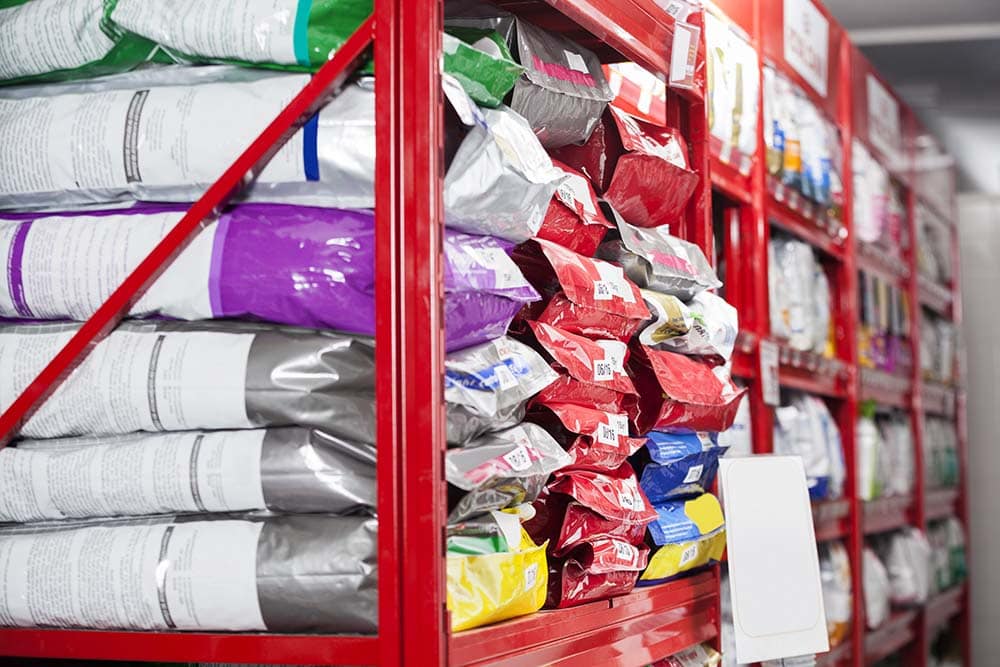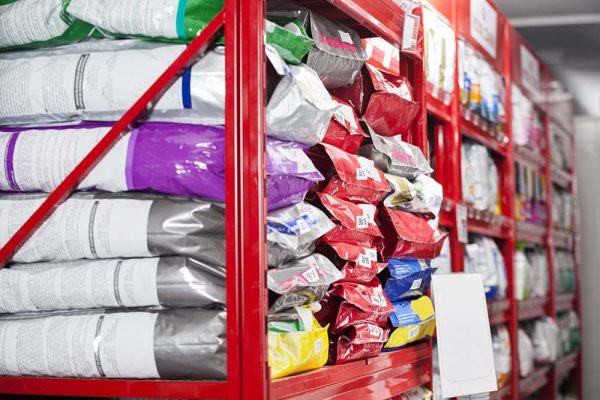Click to Skip Ahead
Given how important nutrition is to pet health, starting your own dog food business can be an interesting and even lucrative idea. Indeed, according to IBISWorld, the pet food industry brings in $27 billion a year, and it is growing 1.
Of course, you can’t embark on such an adventure without first doing research, especially concerning the regulations on the manufacturing of pet food. Beyond the many steps involved in starting a business, there is also the complexity of nutritional standards for dog or cat food.
It’s normal to feel overwhelmed by the plethora of information and standards to be respected when starting this type of business. But don’t worry, here, we give you 10 tips and tricks for starting your dog food business on the right paw.

Get Familiar With Pet Food Regulations
Your very first step should be to familiarize yourself with pet food regulations. After all, animal safety should be your top priority as a pet food manufacturer. The manufacturing and sale of pet food are highly regulated by both the federal and state governments. So, here’s what to do first:
1. Visit the Food and Drug Administration (FDA) Website
Pet food products are regulated by the Federal Food, Drug, and Cosmetic Act (FD&C Act).
- Be safe
- Produced under sanitary conditions
- Contain no harmful substances
- Be truthfully labeled
Also, be aware that if you plan to manufacture and sell canned dog food, you must strictly comply with applicable regulations to avoid the presence of viable microorganisms.
Therefore, by browsing the FDA website, you will learn essential FDA pet food regulations, information on marketing pet food, and labeling requirements. You can also visit the Center for Veterinary Medicine for more information on federal pet food regulations.

2. Comply With the Regulations of Each State Where You Want to Sell Your Dog Food
Since the FDA implements pet food regulatory policies with each U.S. state and with the Association of American Feed Control Officials (AAFCO), you must learn and understand your state’s pet food regulations. This also applies to the products that you want to sell online.
Information on labeling and standard nutrient requirements for complete and balanced pet foods can be found on the AAFCO website.
Note: Although the FDA is responsible for regulating the use of pet food products, the ultimate responsibility for producing safe and effective products rests with manufacturers and distributors.
3. Grab a Copy of AAFCO’s Official Publication
The official AAFCO publication is a goldmine of information for all potential pet food manufacturers and sellers. This publication is available either at a local library or by purchasing a copy on its website.
- Labels
- Product name and intended species
- Quantity statement
- Guaranteed analysis
- Ingredients
- Statement of nutritional adequacy
- Feeding directions
- Name and address of manufacturer or distributor
- Product and manufacturer registration and licensing

Learn More About the Dog Food Industry
Once you are more familiar with FDA, AAFCO, and state pet food regulations, you should learn all you can about the dog food industry.
4. Visit the American Pet Products Association
The American Pet Products Association (APPA) has a mission to promote responsible pet care and advance the pet products industry. You will find many resources to help you start your dog food business, including how to create a business plan, develop your marketing and promotion strategies, and identify your target market.
5. Get to Know Your Competitors
Your goal when starting a dog food business isn’t necessarily to compete with the biggest players out there, like Nestlé Purina Pet Care or Hill’s Pet Nutrition. However, it is a good idea to study the different marketing and promotion strategies of these big brands, so that you can integrate them, on a smaller scale, into your start-up business.

6. Consider Attending the Global Pet Food Expo
Global Pet Expo is a pet industry event aimed at showcasing and promoting the latest and innovative products in the market. This event is presented by the APPA and the Pet Industry Distributors Association. Even if you haven’t started your dog food business yet, you should still attend the event to gain valuable industry insights.
7. Create Your Dog Food Business Plan
A clear plan is essential to succeed as an entrepreneur. You must therefore create your business plan with short-, medium- and long-term objectives in mind.
- Where will your point of sale be?
- Will you be working in-store or online?
- Are you going to produce dog food at home?
- Who is your target market?
- How much can you charge customers?
- What will you name your business?
You can also visit the TRUiC’s page on “How to Start an LLC” if you need help creating your business plan.

8. Identify your Target Market
It is also crucial to properly identify your target market. In the case of dog food, your target market should be primarily dog owners and/or pet stores. You should therefore plan your marketing and promotion strategies around either or both of these groups.
9. Register Your Dog Food Business
You must register your dog food business for it to comply with the law. One of the most common types of structures for this kind of company is a limited liability company. You will also need pet business licenses for permission requirements. Check with your local licensing office for more information.

10. Promote and Market Your Dog Food Business
Once you’ve gone through these steps and your dog food business is compliant, you need to focus on promoting your products. To do this, you can create a website, use social media, subscribe to online marketing tools such as Google Ads or Facebook Advertising, and even create partnerships with other companies dedicated to pets. Word of mouth is also a powerful marketing strategy for attracting and retaining new customers.

Final Thoughts
Now that you know these tips and tricks for starting a dog food business, all you have to do is get to work! Above all, though, go at your own pace, and don’t hesitate to seek advice from seasoned entrepreneurs.
Featured Image Credit: Tyler Olson, Shutterstock











